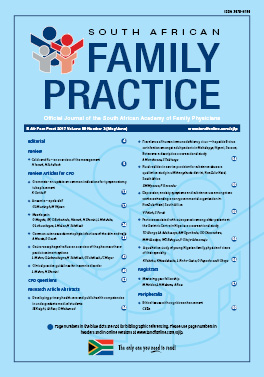Clinical practice guidelines for insomnia disorder
Keywords:
insomnia, benzodiazepines, cognitive behavioural therapy, sleep wake cycle, pharmacologic treatment
Abstract
Insomnia disorder is defined as difficulty in falling asleep, maintaining sleep, and early morning awakenings. Common daytime consequences experienced are fatigue, mood instability and impaired concentration. In chronic insomnia these symptoms persist over a period of at least three months. Chronic insomnia can also be a symptom of a variety of disorders. The pathophysiology of insomnia is theorised as a disorder of nocturnal and daytime hyper-arousal as a result of increased somatic, cortical and cognitive activation. The causes of insomnia can be categorized into situational, medical, psychiatric and pharmacologically-induced. To diagnose insomnia, it is required to evaluate the daytime and nocturnal symptoms, as well as psychiatric and medical history. The Diagnostic and Statistical Manual 5 Criteria (DSM-5) also provides guidelines and criteria to be followed when diagnosing insomnia disorder. Goals of treatment for insomnia disorder are to correct the underlying sleep complaint and this, together with insomnia symptoms, their severity and duration, as well as co-morbid disorders will determine the choice of treatment. In the majority of patients, insomnia can be treated without pharmacological therapy and cognitive behavioural therapy is considered first-line therapy for all patients with insomnia. The most common pharmacological insomnia treatments include benzodiazepines and benzodiazepines receptor agonists. To avoid tolerance and dependence, these hypnotics are recommended to be used at the lowest possible dose, intermittently and for the shortest duration possible. A combination of cognitive behavioural therapy and pharmacological treatment options is recommended for chronic insomnia.
Section
Review Articles
By submitting manuscripts to SAFP, authors of original articles are assigning copyright to the South African Academy of Family Physicians. Copyright of review articles are assigned to the Publisher, Medpharm Publications (Pty) Ltd, unless otherwise specified. Authors may use their own work after publication without written permission, provided they acknowledge the original source. Individuals and academic institutions may freely copy and distribute articles published in SAFP for educational and research purposes without obtaining permission.

